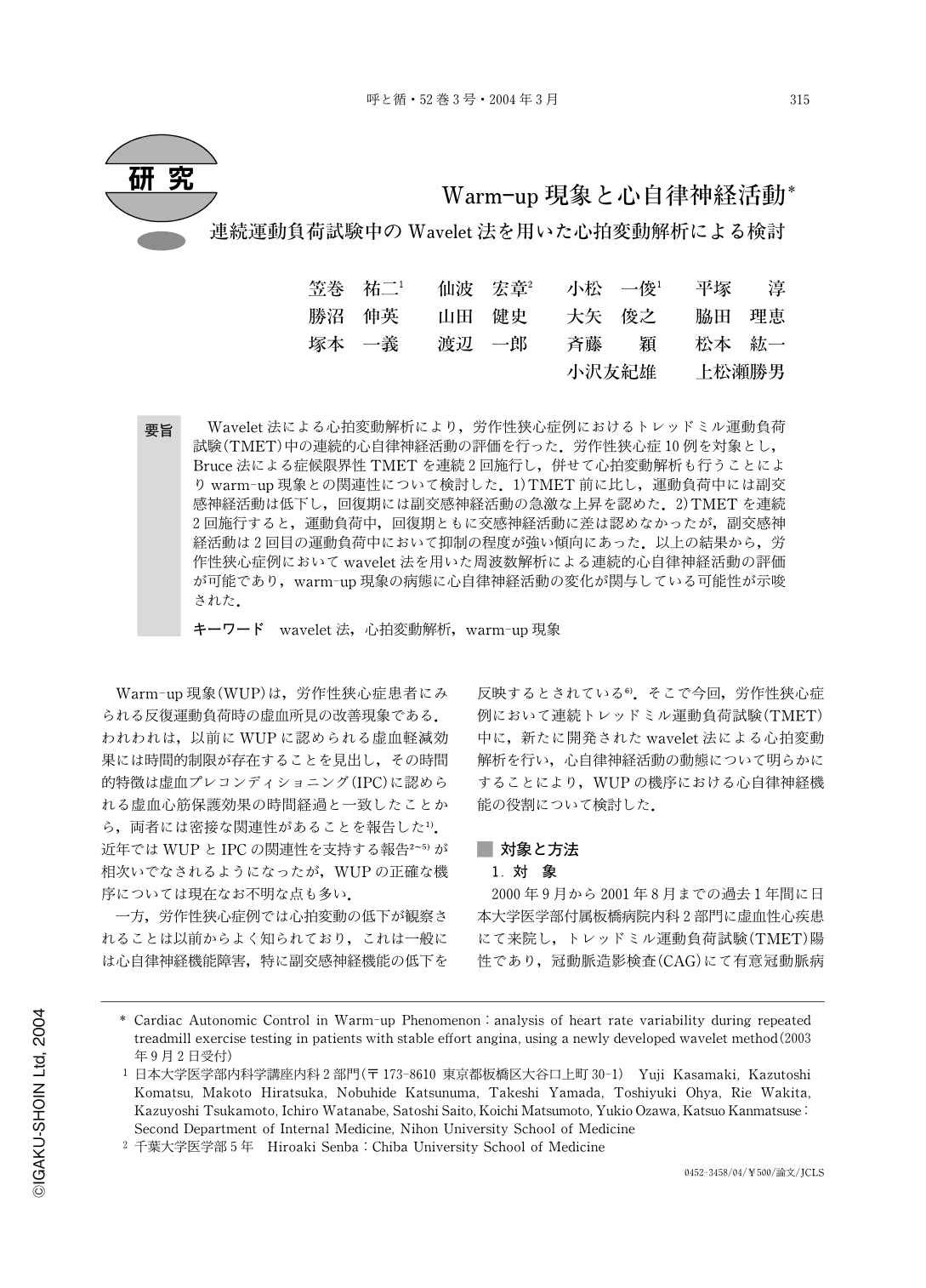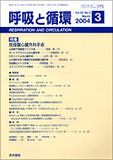Japanese
English
- 有料閲覧
- Abstract 文献概要
- 1ページ目 Look Inside
要旨
Wavelet法による心拍変動解析により,労作性狭心症例におけるトレッドミル運動負荷試験(TMET)中の連続的心自律神経活動の評価を行った.労作性狭心症10例を対象とし,Bruce法による症候限界性TMETを連続2回施行し,併せて心拍変動解析も行うことによりwarm-up現象との関連性について検討した.1)TMET前に比し,運動負荷中には副交感神経活動は低下し,回復期には副交感神経活動の急激な上昇を認めた.2)TMETを連続2回施行すると,運動負荷中,回復期ともに交感神経活動に差は認めなかったが,副交感神経活動は2回目の運動負荷中において抑制の程度が強い傾向にあった.以上の結果から,労作性狭心症例においてwavelet法を用いた周波数解析による連続的心自律神経活動の評価が可能であり,warm-up現象の病態に心自律神経活動の変化が関与している可能性が示唆された.
Summary
The aim of this study was to investigate cardiac autonomic control during Treadmill exercise testing(TMET) in patients with stable effort angina, and to refer to its association with warm-up phenomenon(WUP) by means of heart rate variability(HRV) analysis, using the wavelet method. We performed a spectral analysis of HRV using the wavelet method during two consecutive sessions of TMET in ten patients who were shown by angiography to have significant stenosis in at least 1 major coronary artery vessel. 1)High frequency power(HF), a measure of parasympathetic modulation of heart rate, during the exercise was smaller than that during the pre-exercise period. On the other hand, HF during the recovery phase indicated a rapid increase as compared with HF in the exercise phase. 2)In the patients who had undertaken two consecutive sessions of TMET, HF during the exercise, tended to be smaller in the second test than in the first one, although there were no significant differences between the results the two tests in low frequency power(LF) and LF/HF, a measure of sympathetic modulation of heart rate, during the exercise and the recovery phase. These results suggest that HRV analysis using the wavelet method performed during the TMET could be useful for the evaluation of cardiac autonomic control in patients with stable effort angina. Furthermore, the results indicate that the cardiac autonomic control may play a key role in WUP.

Copyright © 2004, Igaku-Shoin Ltd. All rights reserved.


